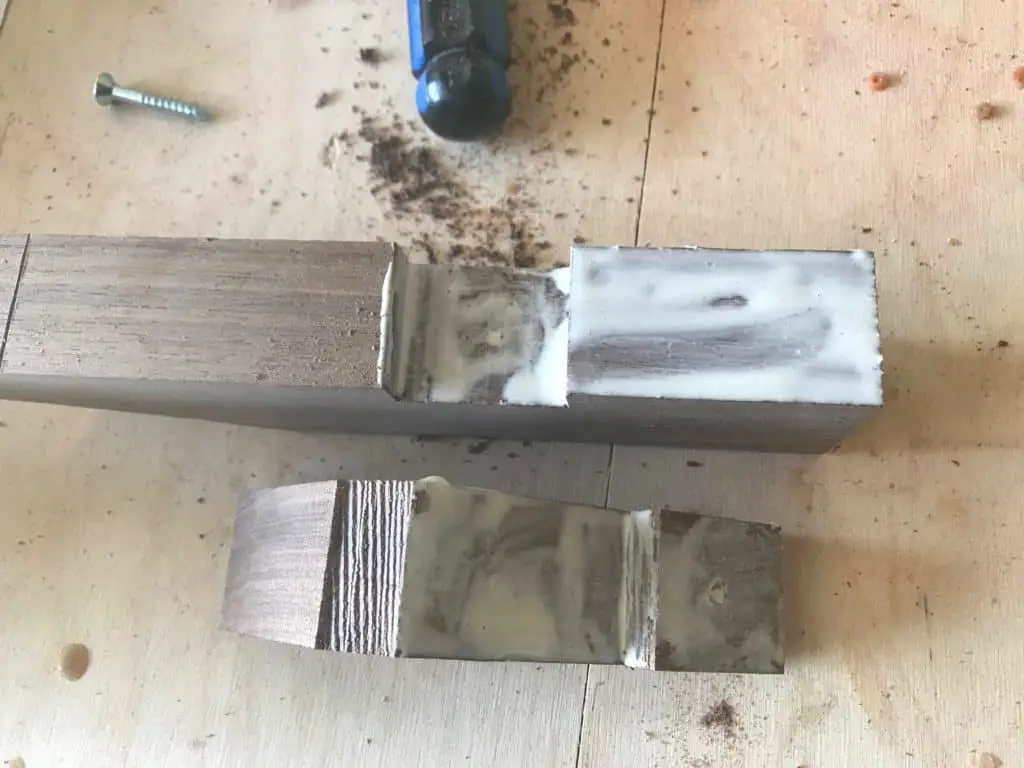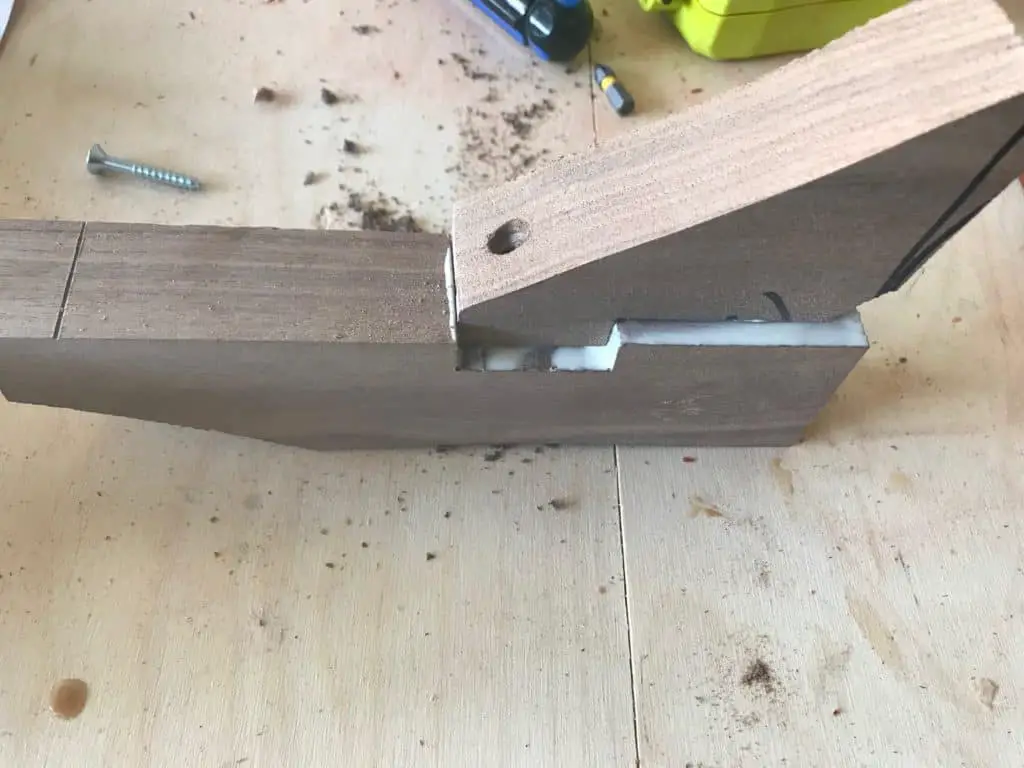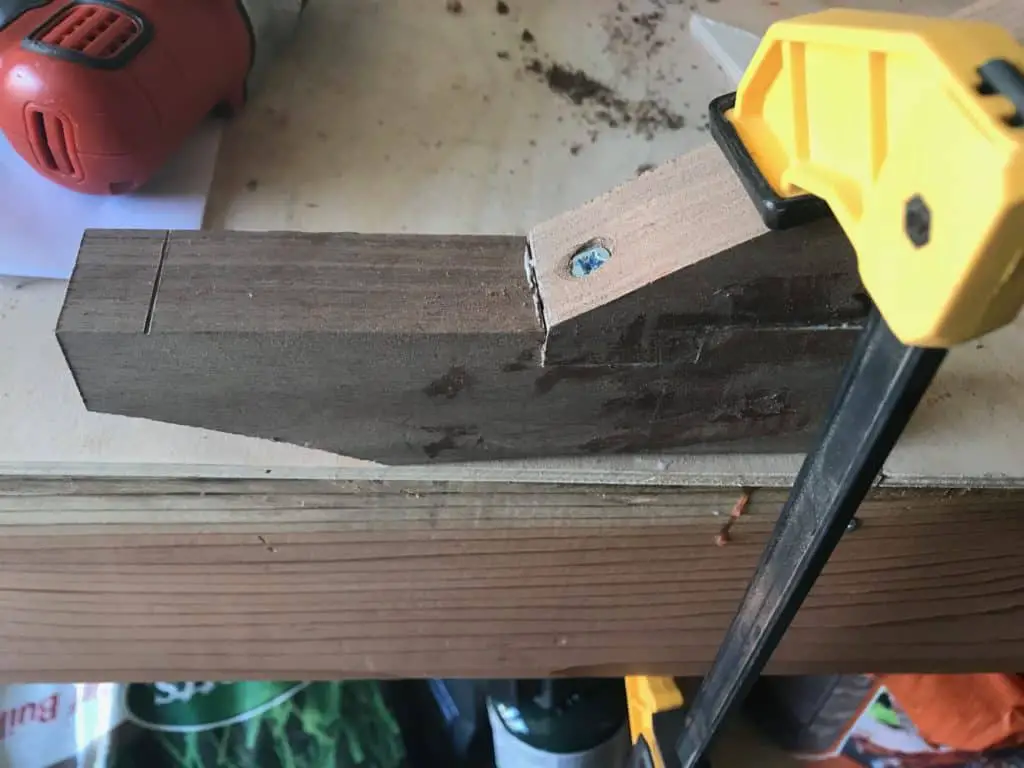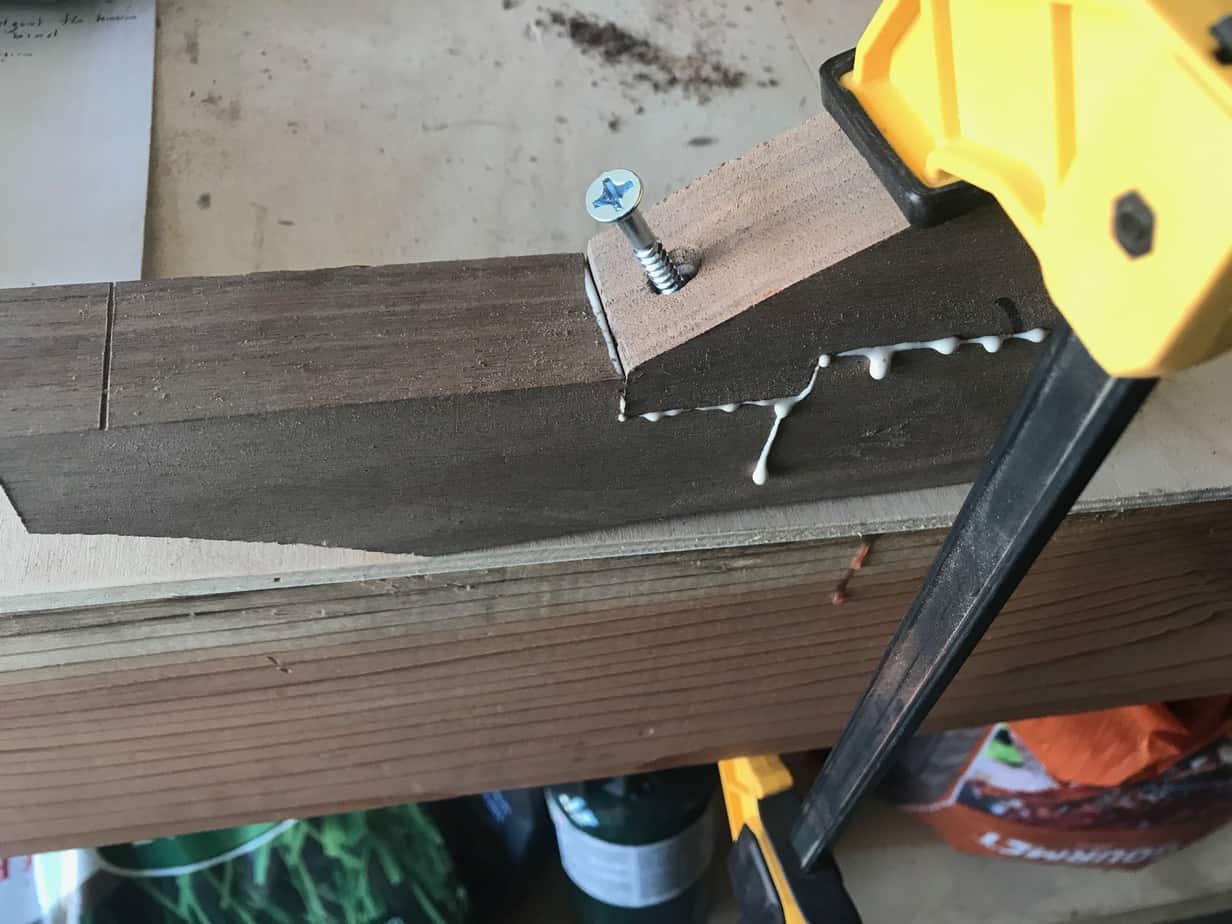When you’re working with wood and want to join pieces or boards together, there is a choice between fixing them with screws and fixing them with wood glue. Both these choices work well, but if you are looking for a more aesthetically pleasing finish, you will probably opt for the wood glue finish. But you might also think as to why not drill a screw into the wood glue to make the bond stronger?
You might have this question in another way when you’re working with a hole from a stripped-out screw and are looking for a filler to fill it when you think of wood glue and if adding a screw into wood glue will be a good idea. If you’re thinking of answers to such scenarios, we’ve got you covered.
The answer to whether you can screw into wood glue is a resounding YES! However, there are instances when you can be satisfied with the quality of work by only using the wood glue.
Wood glue is very popular among woodworkers for its ability to bind together pieces of wood. Most of the time, the bond formed by the glue and the wood is stronger than the wood itself. It is evident when you’re trying to break the bond that the wood breaks first while the glue holds strong. With the wood glue being really strong, there are still situations when adding a screw into wood glue will make the hold stronger.
Can you screw into wood glue?

You can screw into wood glue. The reason you might want to do this varies from situation to situation. There might be situations when you might not want to use any other thing other than just the wood glue. This is because wood glue is very strong, and after it dries, it provides a strong bond between wooden pieces that is very hard to break.
Alternatively, there are times like when you are gluing together end grains of wooden boards. The bond is relatively weaker when compared to gluing face grains and edge grains of boards. During these times, making use of a screw into wood glue will be a good idea. The screw should be ideally drilled through the wood glue to hold the wooden boards together. A pocket screw is usually used to accomplish this task.
There are other times when you are dealing with a screw that is stripped from its place and where you need another replacement screw to go in. Before you put in the screw, you need to fill up the hole. This can be done using wood pieces similar to the one being worked on and adding wood glue to fill up the hole before screwing a new screw into the wood glue. This will ensure that the new screw wedges properly into the wood and stays firm and doesn’t come off easily.
Should you screw into wood glue?

The answer to whether or not you should screw into wood glue depends on the wood you are working with and the screw you want to use. Although there are times when using wood glue will get the job done, we have realized as we have seen earlier that adding a screw into wood glue will be an option that will be beneficial in some instances.
Use Screws in A Structurally Important Load Bearing Joint
Knowing that there are two ready scenarios at hand where we might need to screw into wood glue will help us understand how adding screws into wood glue will be helpful in our woodworking process.
The first scenario is when we are looking to add wood glue to wooden boards and strengthen the bond additionally by adding screws to the wood glue. This might not be the case when we are working with face grains and edge grains of wooden boards as wood glue can be the most effective and faster method of getting the job of bonding the boards together.
Most wood glues that are PVA glues are water-resistant and work well on wooden boards with large surface areas. There are different types of wood glues that will give the woodworker the advantage of delayed hardening to properly align wooden boards together before the glue sets firmly and forms a strong adhesive bond. But, when it comes to working with end grains of wooden boards, wood glue can make use of screws to make the bond stronger.
The addition of a screw into wood glue will not damage the adhesive strength of the glue if the glue is not hardened already. You will only have a broken or compromised bond strength when the wood glue is hardened when you drill the screw into the wood glue.

It is always better to ensure that the glue is in the process of hardening when you use a drill bit to drill a small hole that is smaller than the thread of the screw through the wood glue, joining the pieces of wooden boards together. Once this has been done, you will need to make sure that the screw you are drilling through the wood glue into the two boards is of sufficient length.
When the length of the screw to be drilled into the wood glue has been ensured, you can use a drill bit that sits well on the head of the screw that will be drilled through the wood glue. Since the normal Slotted head screws are difficult to drill with, it is recommended to go for Torx screws as they sit perfectly on the drill bit and can be effortlessly drilled into the wood.
When you are drilling the screw into the wood, ensure that you do not add too much pressure during the end as you may damage the wood. The screw will seamlessly pass through the wood glue if the glue is not hardened yet and will make the whole bond of the wooden boards stronger than if only the wood glue was used in the first place. You can end up with a firm bond with the screw buried deep into the wood and the wood glue acting as a hard adhesive that holds the wooden boards together.
In the second scenario, we will look at how when a screw that is in place in wood strips off and leaves a mark on the wood and leaves the wooden structure unbalanced, as in the case with a door hinge. Here, the screw was already present in the wood but due to repeated wear and tear, or not firm placement has come off. The way to fix this will be to fix the hole the screw has left before adding another screw on top of the filled hole to complete the process.
The ideal way to do this is to ensure that wood glue is used to fill the hole and then to add a screw into the wood glue to make the hold of the screw strong. You will have to make sure that similar wood pieces of the wood being worked on are used as filling for the job. When this is done, you can add the wood glue to the wood pieces and fill up the hole. Ideally, the whole setup will take some time to dry. Once it is dry, you can sand the place with a sander to ensure that it matches the rest of the wood.
After this has been ensured, you can take a screw that is larger than the screw that was already in the place. This is because the thread of the smaller screw would have torn apart the wood fibers as it came away and damaged them. Hence, when a new screw is added to the wood, it has to be able to use new fibers of the wood and wedge firmly into the wood.
The larger screw should also be slightly coarser to bite into the fresh wood. After this, you can drill a pilot hole into the wood glue that is smaller than the size of the threads. When this is done, you can use a drill to screw the large screw into the wood glue. As you do this, make sure that the wood glue is dried and is firm with the wooden pieces filled in. As you drill the screw into the wood glue, make sure that you do not use too much force as this might strip the wood in the same place or somewhere near again.
The new screw into the wood glue will be stronger as it has been placed firmly into the wood. Since you have sanded the surface, you will not be able to tell whether a screw left the spot in the first place.
You can screw into wood glue. But oftentimes it will not be needed as the wood glue in itself is a strong adhesive that is stronger than the wood. But, when you have to deal with scenarios as discussed above, you can screw into wood glue to make sure the end wooden product holds strong.

